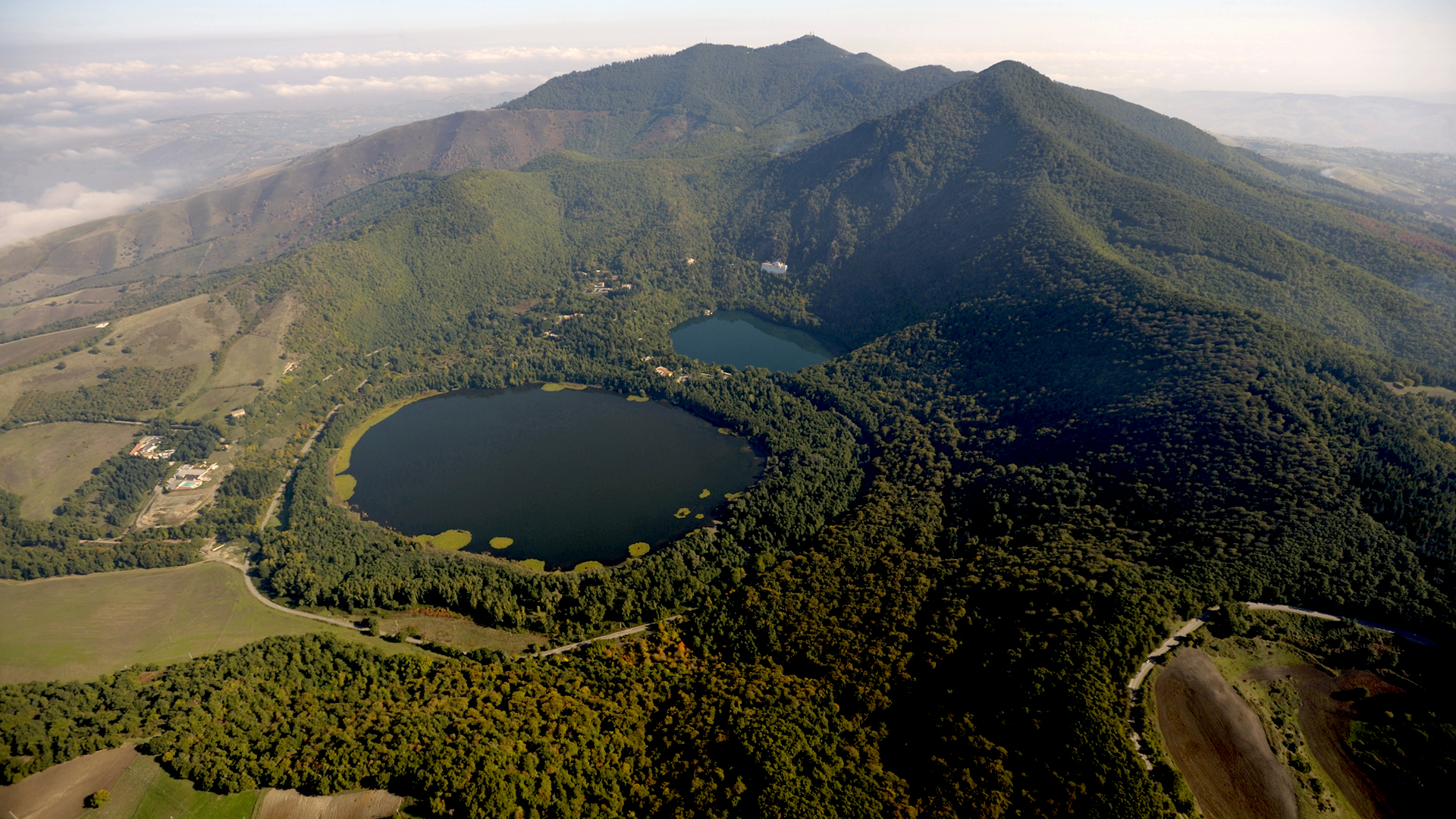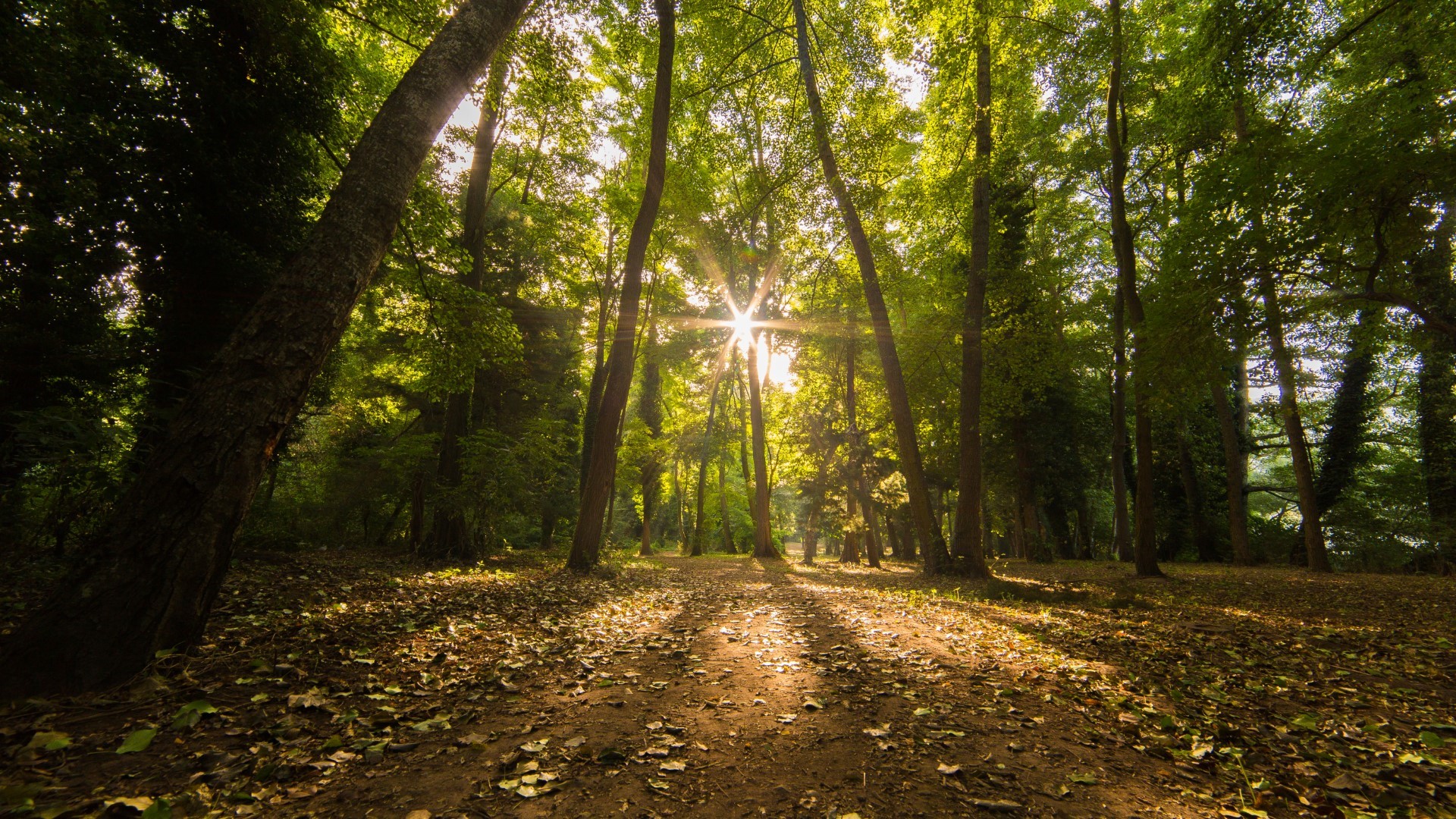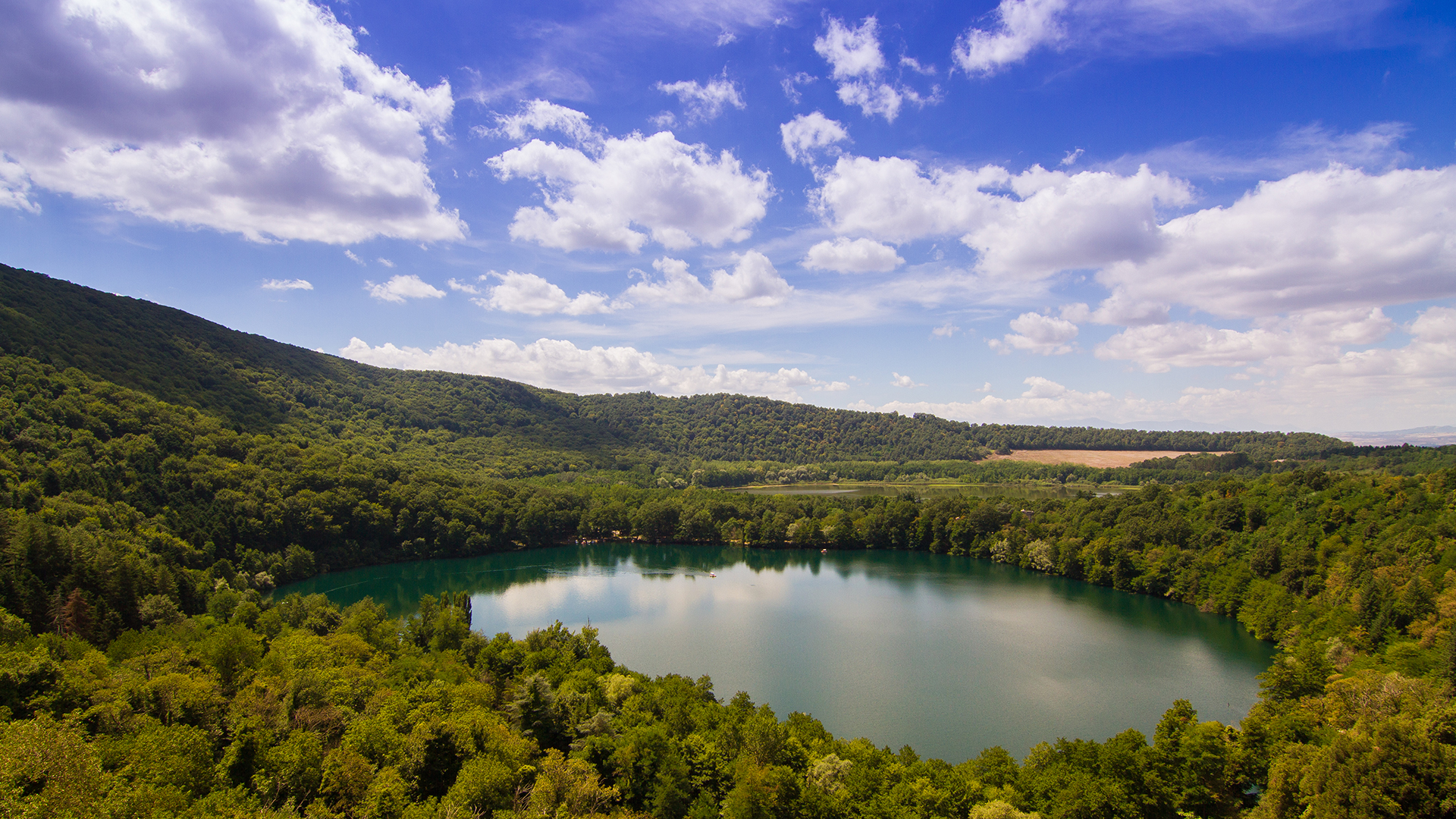The complexity and uniqueness of the natural environments of the Parco del Vulture have enabled the survival of a rich and diverse fauna, which includes many protected species.
The humid environment of the Monticchio lakes is distinctive because of the presence of various species of amphibians and reptiles, as well as a rich fish population. With regard to birds, the reed beds of Lago Grande are home to common moorhens (Gallinula chloropus) and water rails (Rallus aquaticus). It is a nesting ground for the great reed warbler (Acrocephalus arundinaceus), the Eurasian reed warbler (Acrocephalus scirpaceus), the long-tailed tit (Aegithalos caudatus), the common nightingale (Luscinia megarhynchos) and the bearded reedling (Panurus biarmicus).Cormorants (Phalacrocorax carbo), mallards (Anas platyrhynchos) and Eurasian teals (Anas crecca) spend the winter here, while coots (Fulica atra), great-crested grebes (Podiceps cristatus) and little grebes (Tachybaptus ruficollis) "migrate" from Lago Grande to the more sheltered Piccolo during the winter.
Eagles and lanner falcons used to nest on the rocks, but these disappeared after World War II. Emperor Frederick II of Swabia made the Vulture his personal delight, and regularly visited it, staying for long periods in the castles of Lagopesole and Melfi. Here the long days spent hunting inspired him to write his treatise De arte venandi cum avibus. In the Vulture he carried out many of his naturalistic studies and captured birds to be sent to a menagerie for hunting education. Today the Eagle Owl, the Black Kite, the Honey Buzzard and the Marsh Harrier are all present. This area is also home to the majority of Italy's red kite population.
A truly unique species that lives in the Vulture is the Acanthobrahmaea europaea: the European Bramea is a butterfly with a wingspan of over seventy millimetres, which only flies a few days a year and very few hours during the day, including in snowy weather.
This butterfly is regarded as a living fossil, a Miocene relict. The Monticchio lakes are also home to a mammal that has become extremely rare and internationally protected: the otter.












